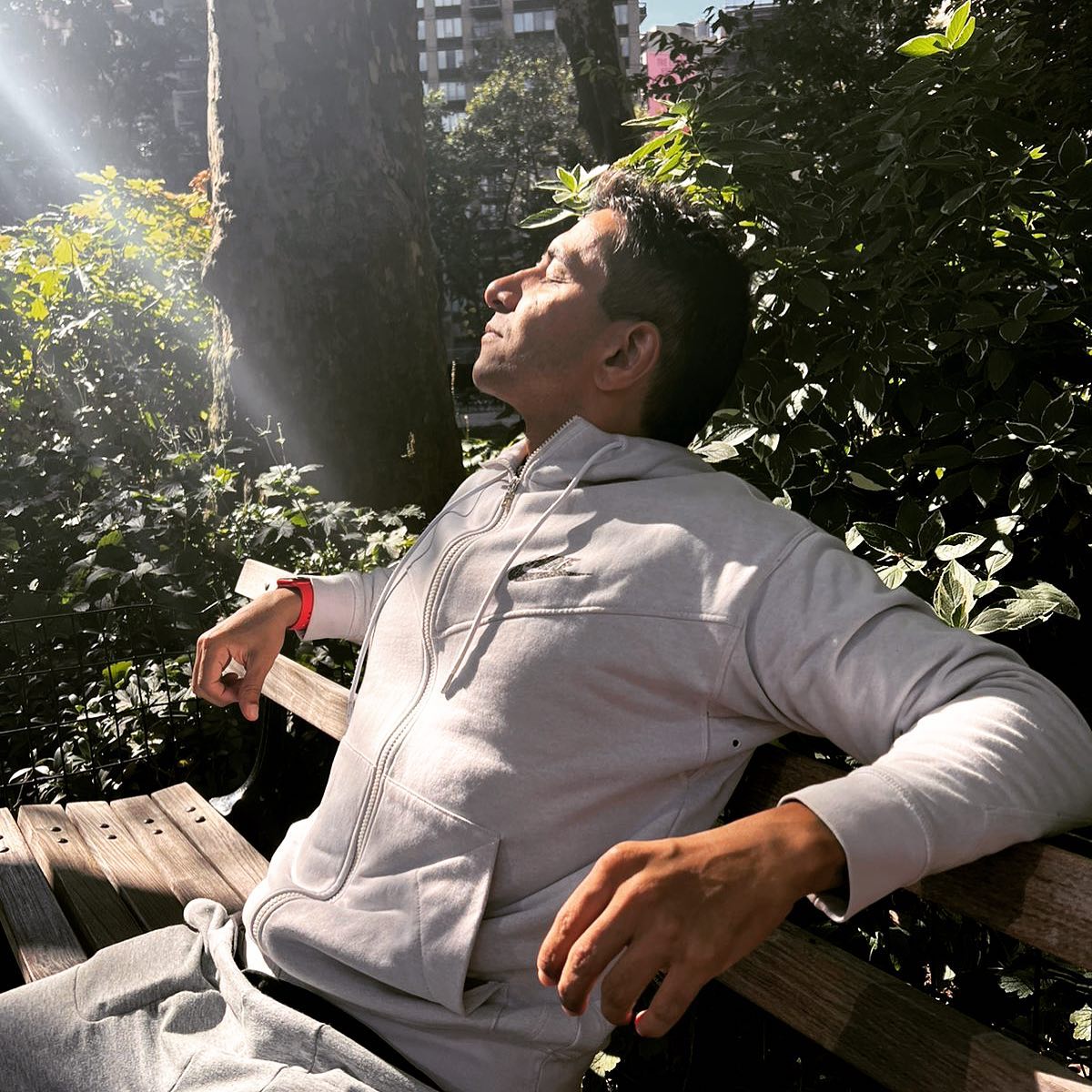Did You Get Your Dose of Sunshine? Here Are 9 Scientific Reasons to Start Today
How many of you love sunshine? Do you feel at ease when you look at sunrise or sunset? Most people think sunlight is only about Vitamin D. But I beg to differ.
Sunshine is a free medicine we are all blessed with in abundance. It is a source of vitality, energy, happiness, life, sleep, mood, and so much more.
It is the giver of all life on earth – humans, animals, plants, everything.
The sun’s gentle rays, a wondrous source of energy, hold profound benefits for our well-being. Just 10 minutes of morning sunlight exposure can unleash a torrent of benefits, harmonizing our circadian rhythms, promoting restful sleep, uplifting our mood, harmonizing our digestive system, fortifying our immunity, aiding in muscle recovery and quality, and even improving our eyesight.
I know some of you might be worried about getting too tanned, but I’m more concerned about you not getting enough sun-kissed goodness! Of course, be smart about it and avoid the scorching hot sun. The best times to soak up the rays are early morning and early evening when it is gentle enough for your body. Your body will tell you when it is gentle enough. But make use of this medicine.
 Did you get your dose of sunshine today? If not, here are a few reasons to begi.
Did you get your dose of sunshine today? If not, here are a few reasons to begi.
Let us explore the scientific marvels of morning sunlight, inspiring us to embrace its life-giving warmth.
1. Have back pain, neck pain, elbow pain, leg pain?
We all know that inflammation is the root cause of this pain. While you alter your diet, speak to your doctors, and make all the lifestyle changes to address the root cause of your aches, please get 15 minutes of early morning sunshine or late evening sunshine. The infrared rays from the sun are your biggest antioxidants that can help the pain get better.
2. Alzheimer’s? Dementia? Parkinson’s? Cognitive brain decline? Get sunshine
Get the power of sunshine if you have any of these conditions or know others who do. 10 minutes in the morning, five minutes in the evening. Early morning sunshine is super powerful. Expose them to it. Many of them also struggle with the sun down syndrome, where after the sun sets patients with these conditions tend to get agitated because there’s a lack of melatonin in their body. We prescribe the sun to our patients and have observed positive outcomes by incorporating sunlight exposure into their daily routines.
3. Circadian Rhythms and the Sun:
Our bodies follow the rhythm of the sun, guided by the circadian clock, a master conductor that governs our internal rhythms. Morning sunlight exposure helps synchronize this internal clock, harmonizing it with the natural cycles of day and night. The gentle rays of the sun stimulate specialized receptors in our eyes, signaling our brain to suppress melatonin production, promoting alertness and activity during the day. By embracing the morning sun, we reset our circadian rhythms, awakening a cascade of benefits that permeate our entire being.
4. A Pathway to Restful Sleep:
Restful sleep begins in the morning sunlight, establishing the foundation for a serene and rejuvenating night’s rest. By exposing ourselves to morning sunlight, we create a robust contrast between day and night, allowing our bodies to recognize the impending darkness and naturally increase melatonin production as evening approaches. This contrast facilitates a smooth transition into a deep, restorative sleep, where dreams weave their tapestries and our minds and muscles renew themselves.
5. Radiant Moods and Emotional Vitality:
As the morning sun caresses our skin, it kindles a transformation within us, nurturing a brighter mood and heightened sense of well-being. Sunlight exposure triggers the release of serotonin, a neurotransmitter associated with feelings of happiness and contentment. The interplay between sunlight and serotonin fuels our emotional vitality, enhancing our resilience to stress and elevating our spirits. With each ray of sunshine, we infuse our days with a vibrant glow that radiates from within.
6. Digestive Harmony and Sunlight:
Morning sunlight holds the key to unlocking the harmonious symphony of our digestive system. Exposure to sunlight stimulates the production of serotonin, the “happy hormone,” which plays a crucial role in modulating our appetite and fostering a balanced relationship with food. By embracing sunlight, we harmonize our digestive symphony, leading to improved digestion, regulated cravings, and a greater sense of satiety. The sunlit path becomes a beacon of wellness, guiding us toward balanced nourishment.
7. A Shield of Immunity:
Sunlight exposure empowers our immune defenses, stimulating the production of vitamin D, an essential nutrient that bolsters our immune system’s ability to ward off infections and reduce the risk of chronic illnesses. The morning sun’s gift of vitamin D fortifies our bodies, nurturing a shield of resilience that empowers us to face life’s challenges head-on.
8. Muscle Recovery and Quality:
The radiance of the morning sun reaches deep into the intricacies of our muscles, promoting recovery and quality. Sunlight exposure enhances muscle regeneration and reduces inflammation, facilitating faster recovery after physical activity. Furthermore, sunlight triggers the activation of vitamin D receptors in muscle cells, promoting muscle strength and integrity. By immersing ourselves in the morning sun, we infuse our muscles with vitality, nurturing a foundation of strength and endurance.
9. Improving Eye Health:
Morning sunlight exposure has also been linked to improved eye health. The blue wavelengths of light in sunlight stimulate the production of dopamine, a neurotransmitter that may help protect against myopia and other vision problems. Additionally, sunlight exposure helps regulate our internal body clock, which can positively impact our sleep patterns, reducing eye strain
How to get sunshine?
Exposing your body to sunlight, even for a short duration like 10 minutes, can have significant mood-lifting benefits. It’s important to address the fears people have about the sun’s connection with cancer by following safe practices. Start with a few minutes of sun exposure and gradually increase the duration to 15 or 20 minutes. It’s best to seek sunlight during the morning or late evening hours, avoiding the peak sun when it can be harsh and cause sunburn.
What if I live in a cold country where there isn’t enough sunshine?
Living in a cold country with limited sunlight can pose challenges, but there are alternatives available. SAD lamps or light boxes are designed to deliver therapeutic intensity light that mimics sunlight. These lamps can effectively alleviate symptoms of seasonal affective disorder. Additionally, you can consider using infrared lamps or bulbs that emit light matching the infrared wavelength of the spectrum.
Infrared light has been scientifically studied and found to stimulate the release of intracellular melatonin, a hormone that regulates sleep-wake cycles and acts as a powerful antioxidant for cellular nourishment.
Exposure to infrared lamps can also help reduce pain, swelling, and inflammation, making it beneficial for individuals with conditions like arthritis that may worsen during colder months. Infrared light primarily targets the mitochondria of our cells, stimulating the production of ATP, which leads to increased energy levels, often lacking in winter.
To benefit from infrared lamps for inflammatory pain, maintain a one-foot distance between you and the lamp, and expose yourself to the light for around five to eight minutes. Observe how your pain improves over time. If you have access to sunlight, take advantage of its powerful infrared rays to reduce inflammation and stimulate chemical and hormonal changes in the body that affect mood. However, it’s important to avoid infrared light exposure if you have a skin condition, cuts, abrasions, or wounds.
The bottom line

The best time of the day to get sunshine varies depending on the specific benefits you are seeking and the location where you reside. However, generally speaking, the ideal time to obtain sunlight for maximum benefits is in the morning.
Exposure to sunlight in the early morning has several advantages supported by scientific research.
It’s important to note that the duration of sunlight exposure should be balanced to avoid excessive UV radiation and potential skin damage. Aim for approximately 10 to 30 minutes of unprotected sunlight exposure, depending on factors such as your skin type, time of year, and geographic location. Remember to follow safe sun exposure practices, such as avoiding peak sun intensity hours and using sunscreen for extended exposure periods.
It’s advisable to consult with a healthcare professional or dermatologist for personalized guidance on sun exposure based on your specific needs and circumstances.
Luke Coutinho
Any big lifestyle change begins with small wins. Need 100 powerful small wins to transform your life and health?
Get your copy of my all-new book, Small Wins Every Day here.
RELATED READINGS
Lessons From the Wild and the Animal Kingdom We Can All Learn
A Kenyan Tribal Doctor Shares Ancient African Drink for Cold, Cough, Fever and Stomach Ache
Try This FREE 14-Day Circadian Living Challenge for Better Health and Weight
3 Scientifically Proven Lifestyle Changes That Are Helping Thousands of Our Clients Sleep Better
|
From a pimple to cancer, our You Care Wellness Program helps you find a way Talk to our integrative team of experts today 18001020253 |










Leave a Reply